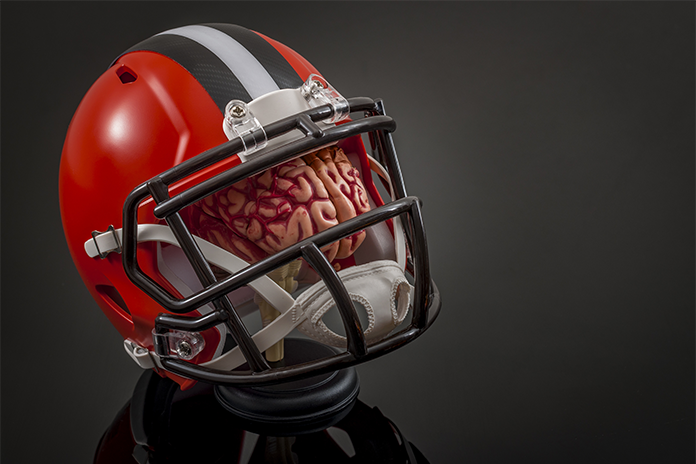To football fans, the gridiron represents a sort of battlefield. Famous athletes are like great warriors. When you consider how poorly we have treated trauma in actual veterans, it should come as no surprise that modern medicine is only just beginning to understand the full scope of injury that football players may be experiencing.
Recently, The Journal of the American Medical Association published a report detailing the findings of Dr. Anna McKee, a neuropathologist who examined the brains of 202 deceased football players. Her findings are a gravely serious concern for the game, especially for the NFL. It seems the repeated blows to the head received by players are the cause of a degenerative disease known as chronic traumatic encephalopathy, or C.T.E.
McKee discovered that of the 202 subjects, 111 played in the NFL and all but one had C.T.E. The condition is characterized by symptoms such as memory loss, confusion, depression and dementia. Every position on the field proved susceptible, even those who might be perceived to receive the least head trauma, such as place-kickers and punters. The deceased players ranged in age from as young as 23 to as old as 89.
The kicker is that C.T.E. can only be diagnosed after death. As the chief of neuropathology at the VA Boston Healthcare System and director of the CTE Center at Boston University, Dr. McKee received permission from families who donated the brains specifically because their loved ones showed symptoms of C.T.E.
Surprisingly enough, head-jarring concussions alone are not enough to cause C.T.E. Some players, like linemen, knock heads on most plays and it is the accumulation of seemingly benign, non-violent blows that are responsible. The trauma triggers a buildup, in the brain tissue, of an abnormal protein called ‘tau’. Brain trauma experts dye thin slices of the tissue so that the tau will show up as darker areas.
C.T.E. affects several parts of the brain, including the:
- Superior frontal cortex – This area is important for cognition and executive function, which includes working memory, planning and abstract reasoning.
- Insula – This area involves emotion, social perception and self-awareness.
- Amygdala – This area controls aggression and anxiety.
C.T.E also damages the mammillary bodies, an area related to memory. Initial features developed by younger players tend to involve behavioral disturbance, mood disturbance or both. In old age, the cognitive impairment sets in.
By now, it is clear that mere participation in football, in its current form, warrants scrutiny. Children must be taught safer tackling methods or encouraged to play flag football. Meanwhile, the NFL has already acknowledged a link between the sport and C.T.E. As for the experts, plenty of questions remain.
As traumatic brain injury specialists, we see the effects of injury to the brain on a daily basis. The brain is the most complex organ in the body. Fixing it is not easy, but people do improve and they do get better. You have to work hard and pace yourself for a long road to recovery. If you or a family member need assistance with recovery from a brain injury, contact us for a consultation.
